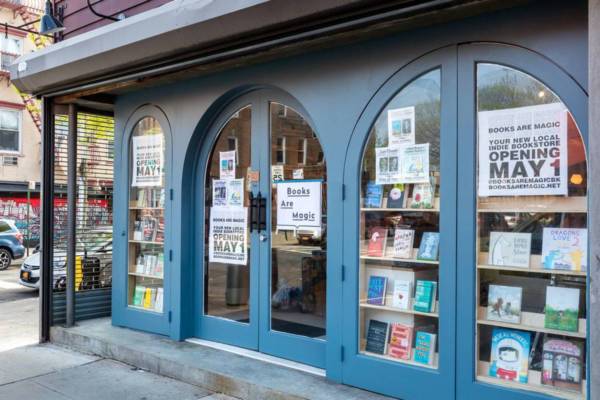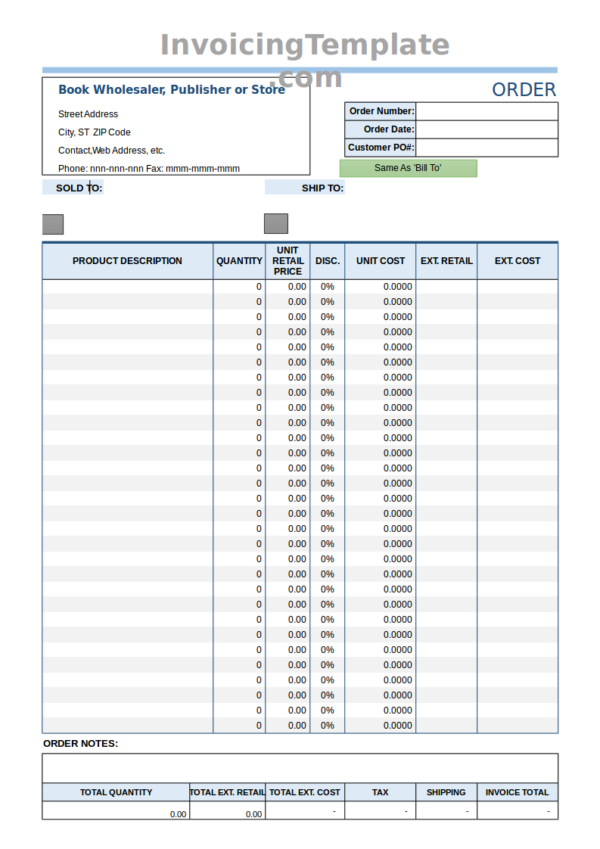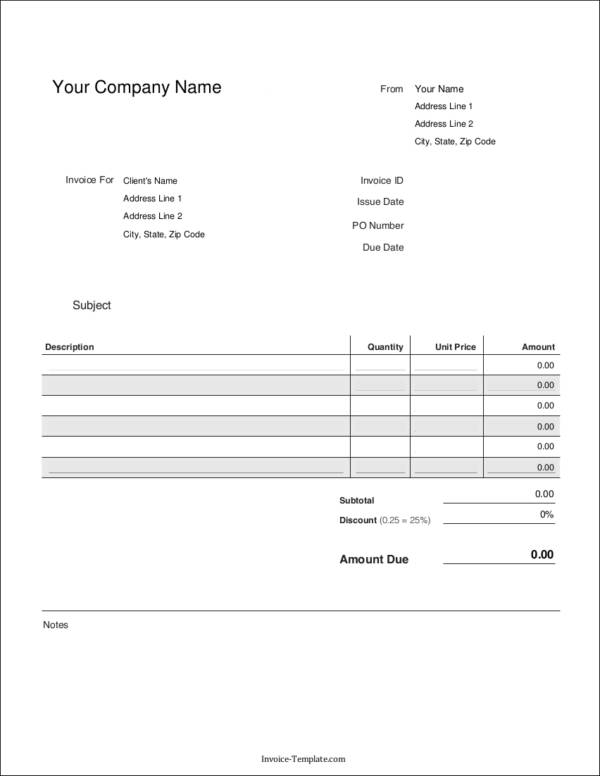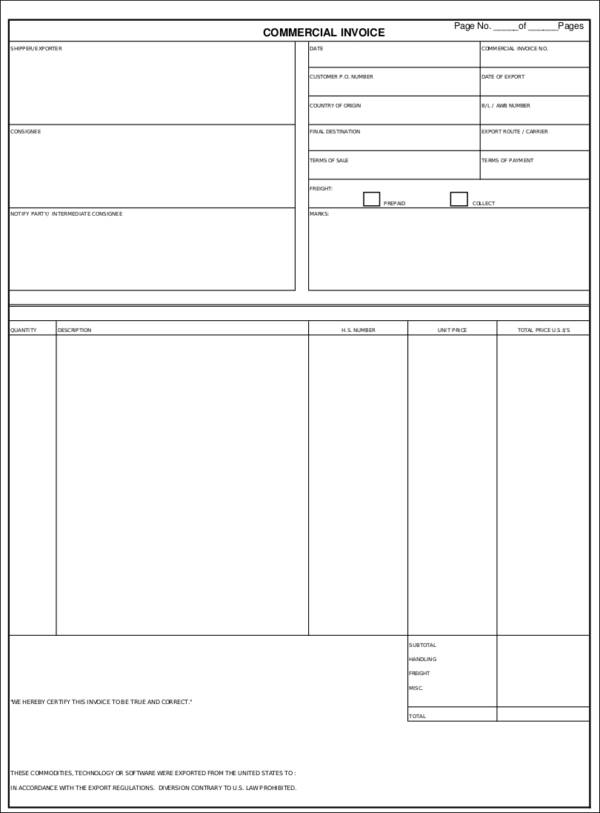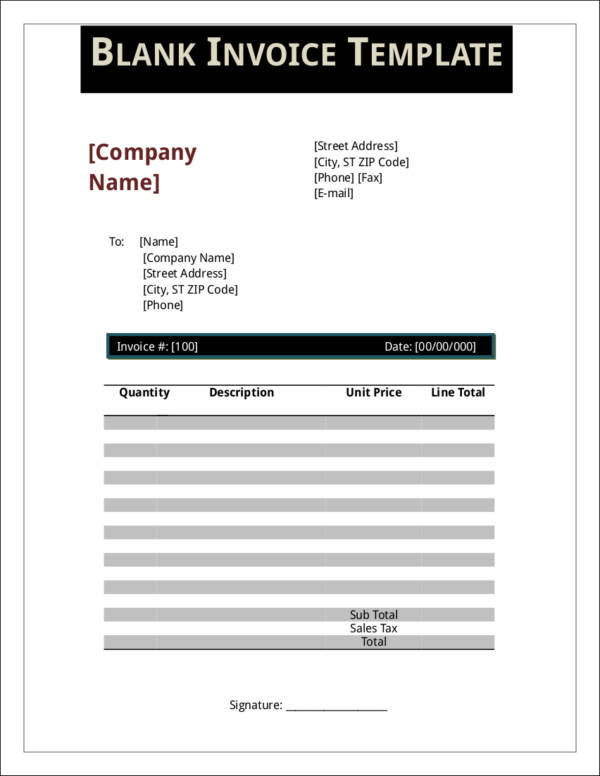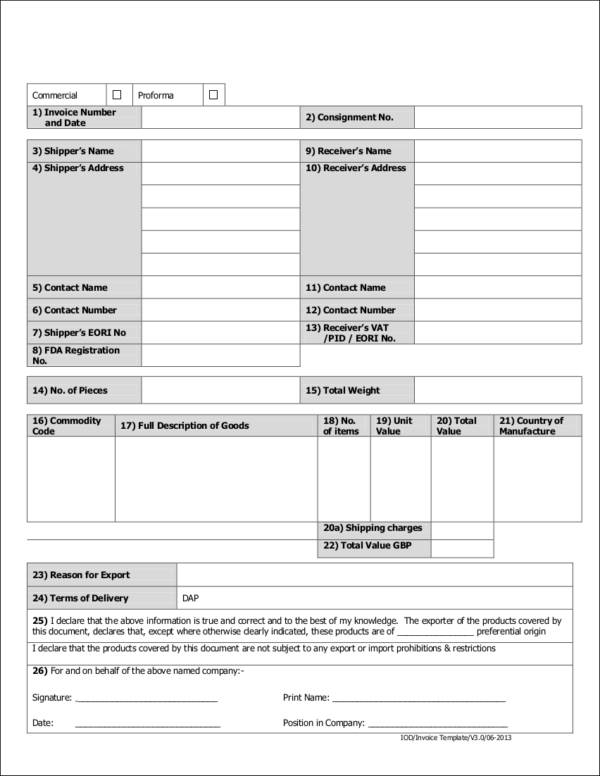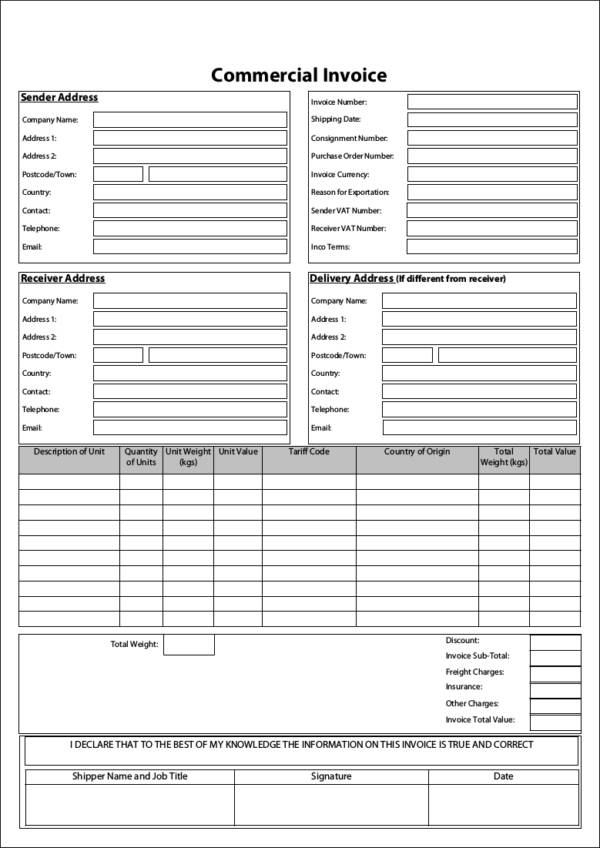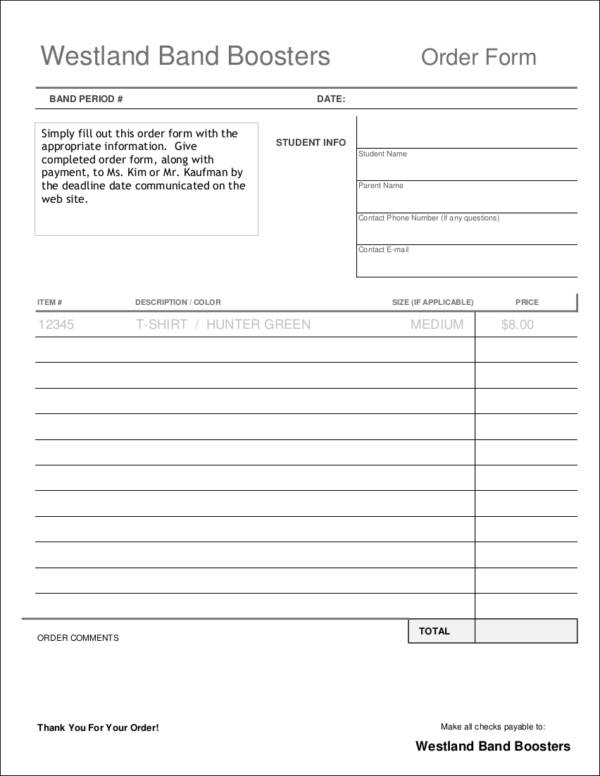Bookstores are both for retail or individual buyers and bulk buyers. Just like other retail businesses, bookstores also issue an invoice where the details of the book are listed as well as its price. In this article we will be learning about bookstore invoices. Invoice samples and templates have been supplied in this article to serve as your visual aid and help you further understand about what it is.
- Sample Printable Invoices
- Blank Invoice Templates
Book Store Invoice Template
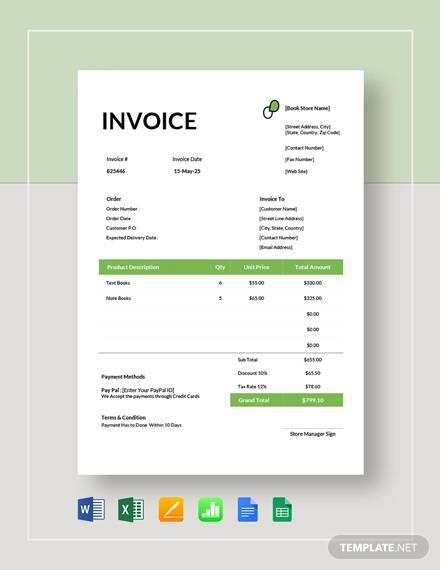
Bookstores sell a wide variety of books and other supplies that are needed for school, office, and personal use. Big and small bookstores alike sell from different genres, like fiction books, nonfiction books, fantasy books, educational books, business books, books for hobbies, and other activities.
Bookstore Invoice Template
Generic Blank Invoice Template
Commercial Invoice Template
Blank Invoice Templates
Similarities and Difference between an Invoice and a Receipt
An invoice is often referred to as a receipt and a receipt is often referred to as an invoice. But that is not really right as invoices are two different things that look the same and are used for the same transaction. Invoices and receipts are commonplace in the business industry, especially in businesses that are involved in retail or buy and sell business. It is important that one is able to differentiate one from the other. To further understand what an invoice and a receipt is, the following is a list of their similarities and differences.
Similarities
- As mentioned above, invoices and receipts look the same and they have the same contents. They both include the name, address, and contact details of the store or business, a detailed list of the products or services, their quantity, their price, the total amount to be paid, the applicable taxes, fees, promotions and discounts, and many more.
- Both an invoice and a receipt is used for the same transaction, which is a sale transaction.
- Two copies of each document are printed. One copy is issued to the customer and the other copy is kept by the store or business.
- They are both used to keep track of the business activities and as important business records.
Differences
- An invoice is used or issued to by the seller or business to its customer to demand payment for the goods and services owed. While a receipt is issued right after the customer or buyer has made the payment and serves as an acknowledgment that the products or services have been paid. This is perhaps the defining characteristic that sets apart an invoice and a receipt.
- Invoices may be paid at a later time or as agreed on by both the seller and the buyer. Receipts cannot be issued unless a payment has been made.
- An invoice shows the promised payment date that has been agreed by both parties, while a receipt shows the actual date when the payment was made.
- Most invoices don’t show the type of payment accepted or used by the buyer or customer. Receipts, on the other hand, include the payment information used by the customer or buyer depending on the payment method used.
Familiarizing the similarities and differences above will surely help you identify an invoice from a receipt. Who says you have to be an expert to be able to tell them apart? If you would like to know more about invoices and receipts, we recommend that you check out topics like Standard Invoice Templates, Tax Invoice Templates, Payment Receipt Templates, and Bill Receipt Samples and Templates.
Uses of a Bookstore Invoice
The uses of bookstore invoices are common in places that sell books and other school and office supplies, especially in well- established bookstores and publishing companies. What are the specific uses of a bookstore invoice? We will find that out in the list of its uses below.
- A bookstore invoice is used to list down all of the products that a buyer has ordered or wants to buy.
- It is used to demand payment for the products or goods that a buyer owes. It not only shows the buyer the price of each item they ordered, but it also gives them the actual or the total amount that they need to pay for.
- Invoices are used by buyers to check and see what items they are asked to pay. If there are discrepancies in it, the buyer can immediately complain before payment is made. This is more convenient than making a complaint after payment has been made.
- A bookstore invoice is used to prove that a sale transaction has taken place and thus completes the documents needed by the business for keeping track of their earnings and during inventories.
- Businesses keep copies of bookstore invoices in their business records to use as reference when filing for business taxes as well as making the exact payment amount.
- Bookstore invoices make it easy for businesses to keep track of the activities of their business and find out what happened to what product items in case they went missing or become questionable.
Invoices are truly useful in whatever filed or industry they are used in. Check out our website if you are interested to learn more about invoices. The topics we offer include gym invoice samples and templates, restaurant invoice samples and templates, and jewelry invoice samples and templates.
Editable Invoice Template
Commercial Invoice Format
Sample Invoice Template
Order Form Invoice Sample
Common Invoice Payment Terms You Should Know
The good thing about invoices is that there are different payment options and arrangements available for the buyer, which they can transact or talk about with the seller. We are accustomed to the setting where products or services are paid right away at the counter before they are packed and brought home. However, there are other ways on how payment can be made. They are immediate payment, payment in advance, Net 7, Net 10, Net 30, 2/10 Net 30, Net 60, Net 90, line of credit, and end of month.
- Immediate payment – This is the commonly used payment arrangement that we have been used to in business where the buyer pays for the goods or services that they owe immediately after they receive the product or service or when it is delivered. Cash on delivery or COD is a type of payment arrangement that falls under immediate payment terms. Immediate payment transactions are useful for small business, but some clients may find it inconvenient to pay first for the products or services before they get to have it evaluated.
- Payment in advance or PIA – In this type of payment term, the good or services orders or requested by the buyer is paid before they receive the items. This is common practice in online transactions by online stores, especially when the goods ordered are expensive or needs special handling during delivery.
- Net 30 – This payment term means that the buyer needs to settle their account within the 30 days time frame allotted for them to make a payment. One must keep in mind that 30 days does not mean 1 month as there are months containing 31 days. Payment is expected within 30 days and not on the 30th day upon receipt of the invoice.
- 2/10 Net 30 – This invoice payment term works just like Net 30, where payment is due within 30 days upon receipt of invoice. However, buyers who make a payment within 10 days get 2% discount on the total amount due. Clients who have enough funds or are able to pay within the 10-day mark take advantage of this discount to reduce costs and save.
- Net 7 – It means that payment has to be made within seven days upon receipt of the invoice or after the invoice date.
- Net 10 – Means that payment has to be made within 10 days upon receipt of the invoice or after the invoice date.
- Net 60 – Means that payment has to be made within 60 days upon receipt of the invoice or after the invoice date.
- Net 90 – Means that payment has to be made within 90 days upon receipt of the invoice or after the invoice date.
- EOM or End of month – This invoice payment arrangement means that payment for the goods or services owed need to be done before the end of the same month when the invoice was issued.
- Line of Credit – This type of payment method is popular among large companies. These companies send monthly invoices to their clients or customers which they can pay through checks or bank transfers on or before the due date stated on the sent invoice. Known examples of this kind of payment arrangement is with utility bills and other service provider bills.
We hope to have helped you learn a lot of basic and useful things about about invoices the information we have provided in this article. To learn more about invoices, feel free to visit our website. Some of the articles you can find there are Retail Invoice Samples & Templates, Equipment Invoice Samples & Templates, and Advertising Invoice Templates.
Related Posts
FREE 3+ Cake Invoice Samples [Wedding, Birthday, Order]
FREE 5+ Accounting Service Invoice Samples in MS Word | MS Excel | Google Docs | Google Sheets | PDF
FREE 10+ Payment Invoice Samples in MS Word | MS Excel | Google Docs | Google Sheets | PDF
FREE 9+ Agriculture Invoice Samples in MS Word | MS Excel | Google Docs | Google Sheets | PDF
FREE 10+ Work Invoice Samples in MS Word | Google Docs | Google Sheets | MS Excel | PDF
FREE 10+ Professional Invoice Samples in MS Word | Google Docs | Google Sheets | MS Excel | PDF
FREE 10+ Cleaning Invoice Samples in MS Word | Google Docs | Google Sheets | MS Excel | PDF
FREE 6+ Massage Invoice Samples in MS Word | MS Excel | Google Docs | Google Sheets | PDF
FREE 10+ Work Order Invoice Samples in MS Word | MS Excel | Google Docs | Google Sheets | PDF
FREE 5+ Legal Service Invoice Samples in MS Word | MS Excel | Google Docs | Google Sheets | PDF
FREE 10+ Hourly Invoice Samples in PDF | MS Word | Google Docs | Google Sheets | Excel
FREE 5+ Architecture Invoice Samples in MS Word | MS Excel | Google Docs | Google Sheets | PDF
FREE 10+ Customer Invoice Samples in MS Word | MS Excel | Google Docs | Google Sheets | PDF
FREE 14+ Construction Invoice Templates in MS Word | PDF
FREE 10+ Delivery Invoice Samples in MS Word | MS Excel | Pages | Numbers | Google Docs | Google Sheets | PDF
